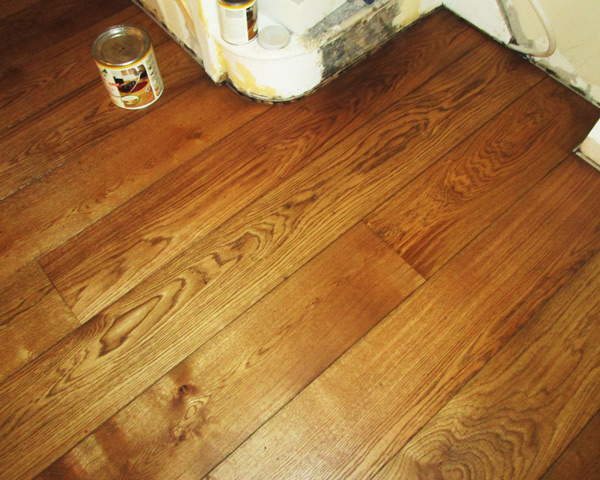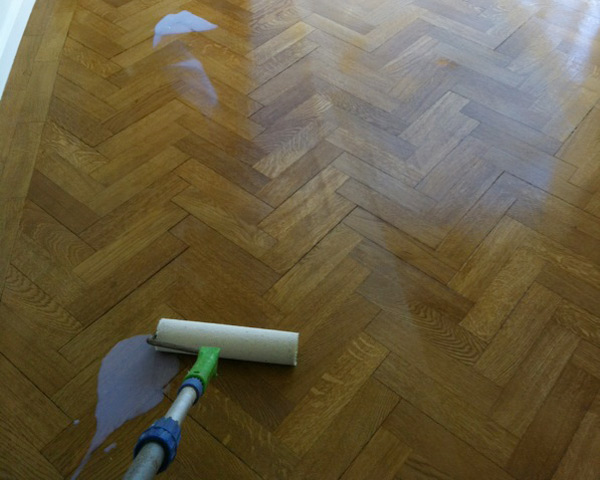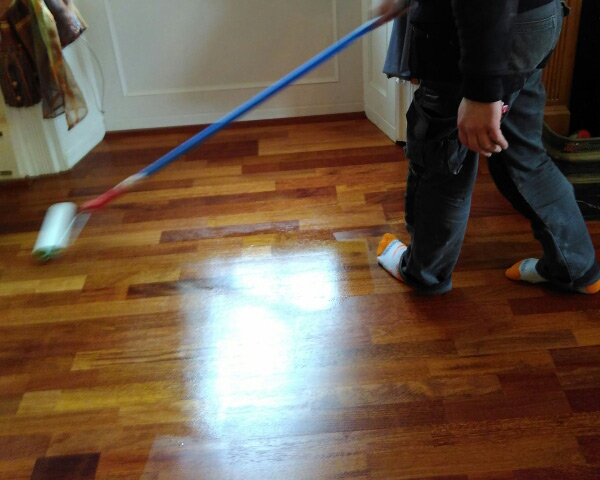Back to Flooring Products
Unlocking the Secrets of Floor Finishes: Your Essential Guide

When it comes to protecting and enhancing your wooden floor, choosing the right finish is just as important as selecting the wood species itself. The type of finish you choose impacts not only the appearance of your flooring but also its durability, maintenance needs, and long-term performance. Since every project is unique, the ideal finish depends on your lifestyle, aesthetic preferences, and the specific demands of your space.
The best way to make a confident choice is to have your floor inspected by an experienced floor sanding and refinishing professional. Their expert advice can save you time, money, and stress while ensuring flawless results. But even without technical knowledge, you can make an informed decision by understanding the key differences between oil-based and water-based floor finishes.
This guide will walk you through the advantages, drawbacks, and best-use scenarios for each finish type, giving you the knowledge you need to choose confidently and achieve the look and protection you want for your home.
Quick Tip: Oil-based finishes provide a richer, warmer tone, while water-based finishes deliver a clearer, more natural look and faster drying times. Your choice should reflect both style and practicality.
What Does a Wood Floor Finish Do?
 Think of a wood floor finish as an invisible shield that sits on top of your flooring. Its primary role is to protect not only the surface but also the deeper structure of the wood from daily wear and external threats. Without this layer, wood is highly vulnerable to its environment, reacting negatively to moisture, sunlight, and physical impact.
Think of a wood floor finish as an invisible shield that sits on top of your flooring. Its primary role is to protect not only the surface but also the deeper structure of the wood from daily wear and external threats. Without this layer, wood is highly vulnerable to its environment, reacting negatively to moisture, sunlight, and physical impact.
A quality finish acts as a defence against scratches, dents, scuffs, and chips, while also reducing the risk of discolouration, fading, or dullness caused by UV rays. It prevents premature drying and cracking due to heat exposure, and it helps minimise the development of gaps between boards. In essence, the finish preserves the natural colour, texture, and strength of your wooden floor, ensuring it remains beautiful and functional for decades.
Pro Tip: Choosing the right finish doesn’t just enhance aesthetics—it directly affects how well your floor withstands traffic, sunlight, and cleaning routines. Always consider both protection and style when making your choice.
How Many Types of Wood Floor Finishes Are There?
The ideal time to apply a wood floor finish is immediately after installation—if your floor is unfinished—or right after professional sanding, once the old finish has been removed and the surface is smooth and even. If you plan to stain your floor, remember that staining always comes before finishing, as the finish is the final protective layer that locks everything in place.
On today’s market, there are many finishes available, but they can generally be divided into three main groups:
- Shellac: A natural product with very low toxicity, making it an eco-friendly option. However, it does not provide the same level of durability or long-term protection as modern alternatives.
- Varnishes (Oil-Based Finishes): These penetrate deeply into the wood’s structure, enhancing its grain and natural warmth. Common types include linseed oil and tung oil. They deliver a rich, classic look but require more frequent maintenance compared to lacquers.
- Lacquers (Wax-Based and Polyurethane Finishes): Known for creating a hard, protective surface layer. While some traditional wax lacquers are more natural and less toxic, modern polyurethane lacquers provide excellent durability, scratch resistance, and moisture protection, making them popular in both domestic and commercial settings.
Quick Tip: If you want a natural look with easy spot-repairs, oil-based finishes are a good choice. For maximum durability and minimal upkeep, waterborne lacquers are often the better option.
What Is Polyurethane?
If you’ve done any research on wood floor finishes, you’ve likely come across the term polyurethane. It often shows up in articles, guides, and recommendations—and for good reason. However, many people get confused when polyurethane is mentioned alongside traditional groups like shellac, varnish, and lacquer. So, where does it really fit in?
Technically, polyurethane is not a separate “group” of finishes but rather a synthetic ingredient that, once dry, forms a hard plastic-like resin layer on top of the wood. This creates a protective barrier that is incredibly durable, scratch-resistant, and long-lasting. Because of these outstanding qualities, polyurethane is widely considered a finish in its own right, even though it doesn’t neatly belong in the traditional categories.
Polyurethane has become one of the most popular choices for wood floor refinishing because it combines toughness with relatively easy maintenance. It protects against wear, spills, and scuffs far better than many natural alternatives, making it especially suitable for busy households or commercial spaces.
There are two main types of polyurethane used for wood floors, each with distinct benefits:
- Oil-Based Polyurethane: Known for its warm, amber tone and deep enhancement of the wood’s grain. Slower to dry but provides an exceptionally strong finish.
- Water-Based Polyurethane: Clear in appearance, fast-drying, and lower in VOCs (volatile organic compounds). Offers a more natural look while still providing excellent durability.
Pro Tip: If you want a warm, classic look, oil-based polyurethane is ideal. For a modern, eco-friendlier option with quick drying times, choose water-based polyurethane.
Oil-Based (Solvent-Based) Polyurethane
 Oil-based, also called solvent-based polyurethane, has long been one of the most trusted and widely used wood floor finishes. Known for its strength and traditional look, it’s often the go-to choice for homeowners who want their wooden floors to last for decades with minimal intervention. Let’s explore the main aspects that make this finish so popular—along with the downsides you’ll need to consider before choosing it.
Oil-based, also called solvent-based polyurethane, has long been one of the most trusted and widely used wood floor finishes. Known for its strength and traditional look, it’s often the go-to choice for homeowners who want their wooden floors to last for decades with minimal intervention. Let’s explore the main aspects that make this finish so popular—along with the downsides you’ll need to consider before choosing it.
Appearance
Oil-based polyurethane is loved for the warm, rich, and glossy look it gives to wooden floors. It adds depth and enhances the natural wood grain, creating a finish that feels luxurious and classic. However, keep in mind one of its drawbacks: over time, oil-based polyurethane can take on a darker or yellowish tone. For some, this mellowed patina adds charm, while for others it may clash with modern interior styles. Consider your long-term design goals before making a choice.
Durability
If your priority is toughness, oil-based polyurethane is hard to beat. It’s one of the most durable finishes available, outperforming water-based versions in terms of resistance to scratches, heat, and moisture. Thanks to its high content of VOCs (volatile organic compounds), it forms a strong, resilient coating that requires fewer reapplications and provides exceptional long-term protection. For high-traffic homes, businesses, or even kitchens, this durability is a major advantage.
Price
Another benefit is cost. Oil-based polyurethane is typically cheaper than water-based alternatives, making it an attractive option for budget-conscious homeowners. On top of that, it usually requires fewer coats to achieve a uniform, opaque coverage. When you factor in its long-lasting nature and reduced need for refinishing, it’s clear why many see it as a smart long-term investment.
Health Concerns
The main drawback of solvent-based polyurethane lies in its high VOC levels. These chemicals are released as fumes during and after application, which can pose health risks such as allergies or respiratory irritation if proper precautions aren’t taken. Curing times are also longer, meaning the room will need to be well-ventilated for several weeks to allow full off-gassing. If you have children, pets, or limited ability to leave the space unoccupied, this can be a major inconvenience.
If health and quick turnaround are top priorities, water-based polyurethane may be the better option. But if you have the time and can provide good ventilation, oil-based polyurethane remains one of the toughest and most cost-effective finishes on the market.
Buy Solvent Based Floor Lacquers
Quick Tip: Oil-based polyurethane offers unmatched durability, but it comes with longer drying times and stronger fumes. Plan your project timeline carefully and always ventilate thoroughly during curing.
Water-Based Polyurethane
 Water-based polyurethane has become increasingly popular among homeowners and professionals thanks to its fast drying times, low odour, and eco-friendlier profile. While not as traditional-looking as oil-based poly, it offers a modern, clear finish that preserves the natural colour of the wood. Let’s explore its main characteristics.
Water-based polyurethane has become increasingly popular among homeowners and professionals thanks to its fast drying times, low odour, and eco-friendlier profile. While not as traditional-looking as oil-based poly, it offers a modern, clear finish that preserves the natural colour of the wood. Let’s explore its main characteristics.
Curing
One of the standout benefits of water-based polyurethane is its quick drying and curing cycle. In optimal conditions—45% humidity, good ventilation, and room temperature around 21°C (70°F)—you can usually walk on the floor within 24 hours, bring furniture back after 48 hours, and expect complete curing within two weeks. Keep in mind that drying time starts after the final coat is applied, and you’ll need to allow curing time between each layer. More coats mean slightly longer waiting, but the fast turnaround still beats oil-based finishes by a wide margin.
Odour
Like all finishes, water-based polyurethane has an odour, but thanks to its low VOC (volatile organic compounds) content, it’s much milder compared to oil-based poly. This makes it easier in day-to-day life, reducing disruption and health risks. With good ventilation, most of the smell will dissipate quickly.
Health Concerns
The lower VOC levels are a big advantage for households with children, pets, or allergy sufferers. Not only is the off-gassing period shorter, but the reduced chemical load means you’ll enjoy a healthier indoor air quality overall. This is one of the main reasons why water-based poly has become the go-to option for eco-conscious homeowners.
Flexibility
Unlike oil-based polyurethane, water-based versions do not amber or yellow over time. This makes them the perfect choice for light-coloured, whitewashed, or grey-toned floors where maintaining the original colour is crucial. The finish remains clear and consistent, preserving the modern, natural look of your flooring.
Buy Water-Based Floor Lacquers
Quick Tip: If you want a low-odour, eco-friendly finish that won’t alter the colour of your wood, water-based polyurethane is your best option. Just be ready to apply more coats than oil-based poly for maximum durability.
In Conclusion
As you can see, the choice between different wood floor finishes—especially water-based and oil-based polyurethane—depends on a balance of budget, lifestyle, health concerns, and aesthetic goals. There’s no one-size-fits-all answer. The key is to understand your priorities and consult a professional to ensure the finish suits your project perfectly.
Here’s a quick comparison to help you decide:
| Feature |
Water-Based Polyurethane |
Oil-Based Polyurethane |
| Drying Time |
Quick drying (walkable in 24 hrs, fully cured in ~2 weeks) |
Slower drying (requires several weeks to cure fully) |
| VOC Levels & Odour |
Lower VOCs, milder odour, shorter off-gassing |
Higher VOCs, stronger odour, longer off-gassing |
| Appearance Over Time |
Remains clear; ideal for white, grey, or light floors |
Ambers and yellows over time, giving a warmer patina |
| Durability |
Durable but may need more coats for heavy traffic |
Extremely durable, long-lasting, fewer reapplications |
| Cost |
More expensive upfront |
Cheaper and more cost-effective long term |
Final Tip: If you want a clear, eco-friendly finish with faster drying, go for water-based polyurethane. If you prefer rich colour depth and maximum durability at a lower cost, oil-based polyurethane is still the winner.
Frequently Asked Questions About Oil-Based vs Water-Based Polyurethane Finishes
Which is better for hardwood floors, oil-based or water-based polyurethane?
It depends on your priorities. Oil-based polyurethane is more durable, less expensive, and gives wood a warm, amber tone. Water-based polyurethane dries faster, has lower VOCs, and stays clear over time—making it ideal for light-coloured or grey floors.
Does water-based polyurethane last as long as oil-based?
While oil-based polyurethane usually lasts longer due to its harder finish, water-based polyurethane can still perform very well with proper maintenance. However, it may require more coats and earlier reapplications in high-traffic areas.
Is water-based polyurethane safer than oil-based?
Yes. Water-based finishes have fewer VOCs, emit less odour, and cure faster. This makes them safer for families with children, pets, or allergy sufferers, as well as for anyone concerned with indoor air quality.
Will oil-based polyurethane turn yellow over time?
Yes, oil-based polyurethane ambers with age, giving the wood a warmer, sometimes yellowish tone. This can enhance darker wood species but may be undesirable for light or whitewashed flooring. Water-based poly, in contrast, stays clear.
How many coats of polyurethane should I apply?
For oil-based polyurethane, 2–3 coats are typically enough. For water-based polyurethane, 3–4 coats are recommended, as the formula is thinner and requires more layers to achieve the same durability.